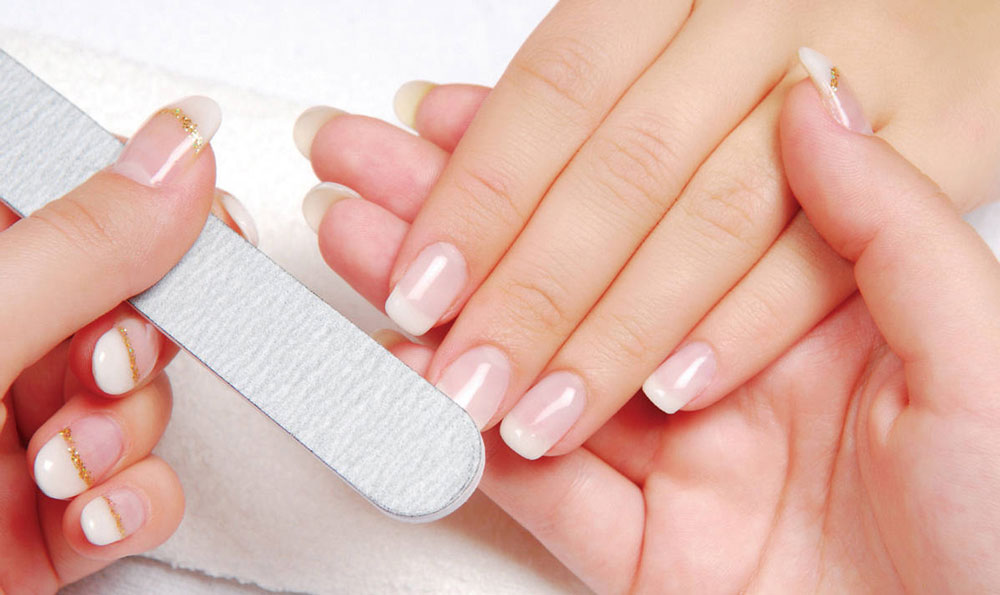Confused between nail tips and nail forms? We’re here to help! Whether you’re a training nail technician or simply want to know exactly what you’re asking for next time you treat yourself to a salon visit, our simple guide will give you all the basic information and tips you need about nail forms vs nail tips. We’ve detailed the difference between the two as well as the pros and cons to both methods of application to help you decide which is right for you.
Nail Tips
What are nail tips?
Nail tips are perhaps what comes to mind when thinking about fake nails. They are made out of acrylic plastic and act as – you guessed it!– your nail tips. They’re glued onto the nail plate and form a base for applying gel or acrylic to. You can choose nail tips that cover the full nail plate or ones that just partially cover the nail.
How to apply nail tips
It’s important to ensure that the nail tip perfectly fits the size and shape of the natural nail plate in order to ensure they remain on securely and also to prevent damage to the natural nail. Nail tips come in a number of different sizes, and you can also shape them to custom-fit the shape of the nail using a file and buffer.
Once you’ve confirmed the sides of your nail tips align perfectly with the natural nail, nail tips are stuck down using a small amount of nail glue at the point it meets the nail bed. Hold for 10 seconds and use a pinching tool or some tweezers if needed to make sure the sides are securely stuck down.
Once you’ve stuck your nail tips on, you can cut them down and shape them to the length and shape desired before applying your gel or acrylic.
Nail Tip Pros:
-
Using nail tips is easy to master for beginners
-
Nail tips create a very uniform look on each nail
-
They create a strong and sturdy foundation
Nail Tip Cons:
-
The application process is time-consuming due to each precise step
-
Nail tips can create pressure on the nail bed, resulting in damage
-
They can look thicker and have a less natural aesthetic
Nail Forms
What are nail forms?
Nail forms are used for the sculpting method of nail extensions and can be used with gel or acrylic. They sit under the nail and act as a temporary base for applying gel or acrylic, helping you build the nail to the desired length and shape. They are removed once the nail is built.
How to apply nail forms
While nail tips are glued on top of the nail, nail forms are placed directly under the nail. They are like stickers that are designed to be wrapped around each finger to keep them securely in place. The nail form should be snug around the finger and fit the shape of the nail perfectly before you start any application.
Nail forms have a handy guide on them which allows you to determine the length and shape of your acrylic or gel extensions. It’s important to line them up perfectly and secure them in place before applying. No glue is needed; once they’re in place, you can start your gel or acrylic application!
Nail Form Pros:
-
Once you’ve mastered nail forms, they are generally considered easier to apply than nail tips
-
Fewer steps also mean they are quicker to apply once you’ve got the hang of it.
-
Sculpting with nail forms requires fewer products and kit
-
The finished look is generally thinner and more natural than using nail tips
Nail Form Pros:
-
Sculpting with nail forms can be harder to master
-
Because of this, it can be more time-consuming at first
-
Clients may be less familiar with nail forms than classic nail tips
When it comes to nail extensions, there isn’t a right or wrong! As you can see, there are pros and cons for both nail tips and nail forms, but we hope we’ve cleared up the difference between the two and have helped you make your decision.


 24-4-2021
24-4-2021
 24-05-2021
24-05-2021


